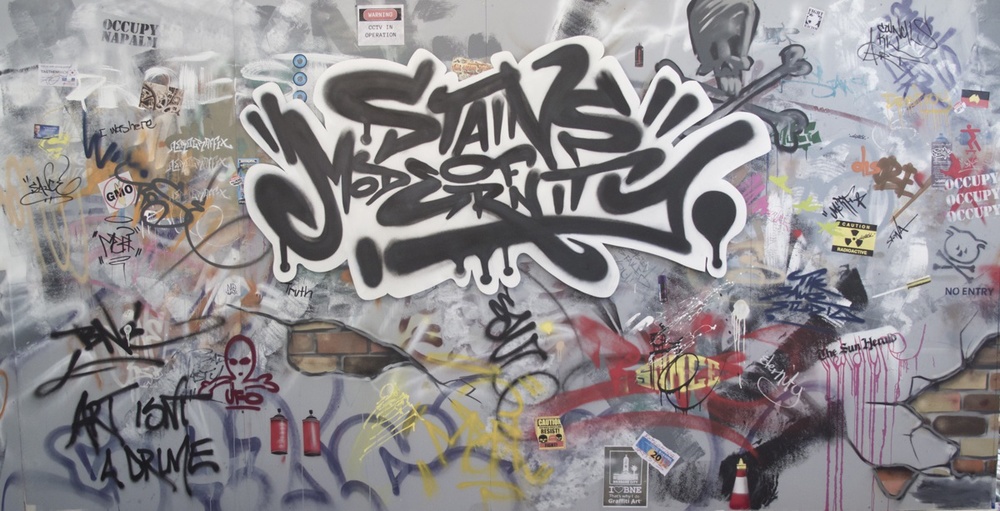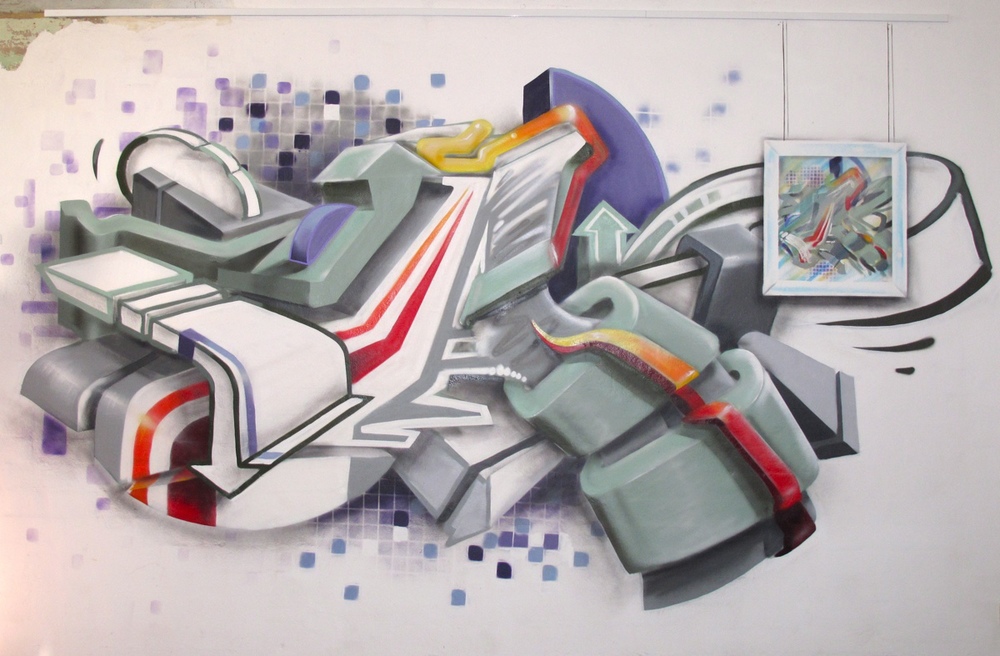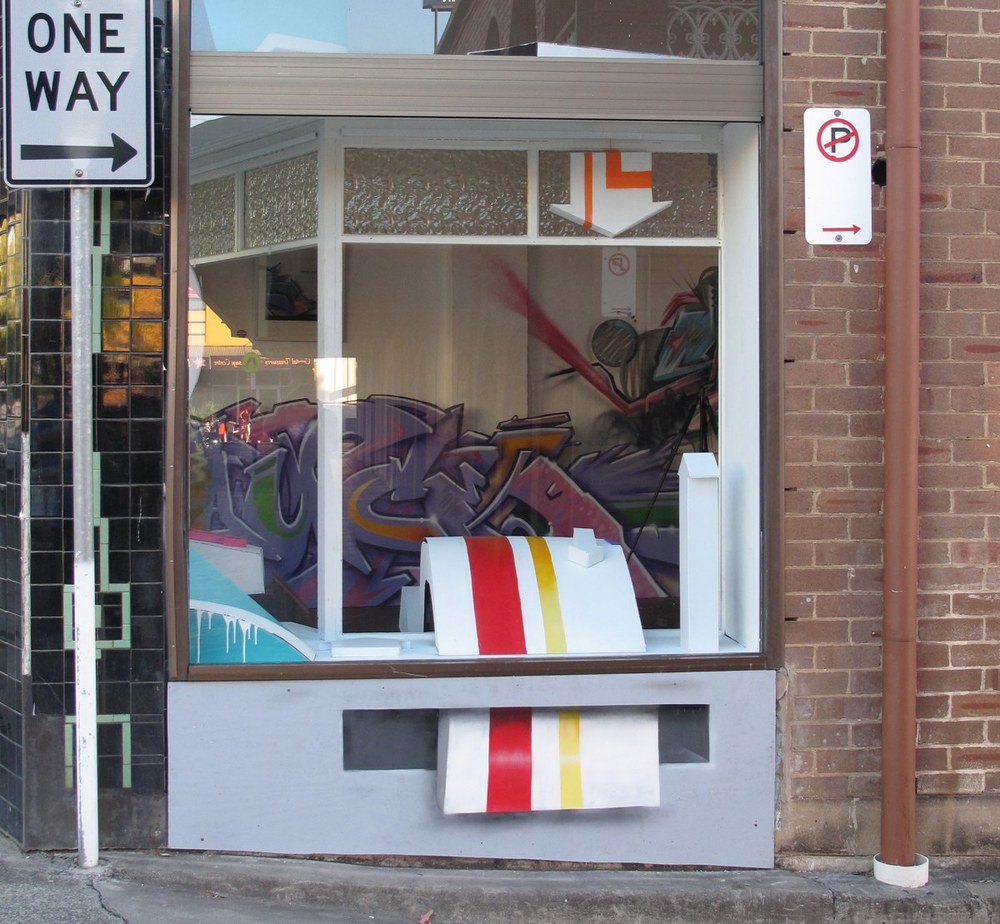Stains of Modernity
/

High Modernity, Post Modernity, Post Modernism, Post-Post Modernism, these are the times we live in. Pontificating about art and high culture will only go so far, it doesn’t address the bigger issues and is inaccessible to the wider population. Art is more than oils on canvas which are hung in well lit and over funded galleries. Graffiti embodies the notion of doing art as an act of expression as opposed to the more palatable and tamed visuals of the gallery market. Graffiti is more than just paint on walls from some young hoodlums. It’s a part of a culture and a way of life. Humans have been making their marks on walls from the beginning of history and the typography scrawled over the urban environment is just an extension of this.

This Hip Hop culture is evolving over time and is a part of the urban identity. It is this identity which creates a new history and a new narrative. Hip Hop grew out of the disquiet of New York and the American streets during the 1970s. It’s often associated with crime and violence, but true Hip Hop is anything but violent. It’s about battling to be the best and earning respect from your peers by honing your craft and perfecting your style. It’s peaceful, respectful and skillful. Flash-forward to now, and Australians have their own take on Hip Hop. It’s more about mates, larrikins and beer. The music talks more about politics and BBQs than bitches and homies, but there’s still a good dose of competition and testosterone. And graffiti is just one of the four elements which is celebrated and elevated by this competition. By eradicating graffiti and aerosol art from our streets, marginalizing it and calling it a crime is sheer ignorance.

The beginning of modernity saw immense change and the industrialization of the Western world. This industrial change is responsible for the creation of the aerosol can and the colours which are now accessible and neatly packaged. Modernity also reinforced the bureaucratic and hierarchical social structures which seek to marginalize and denigrate anything with unique thought, thus making graffiti the best weapon against this concrete and urbane landscape. Graffiti is as old as time itself, and now the tools are pre-packaged and readily available.

